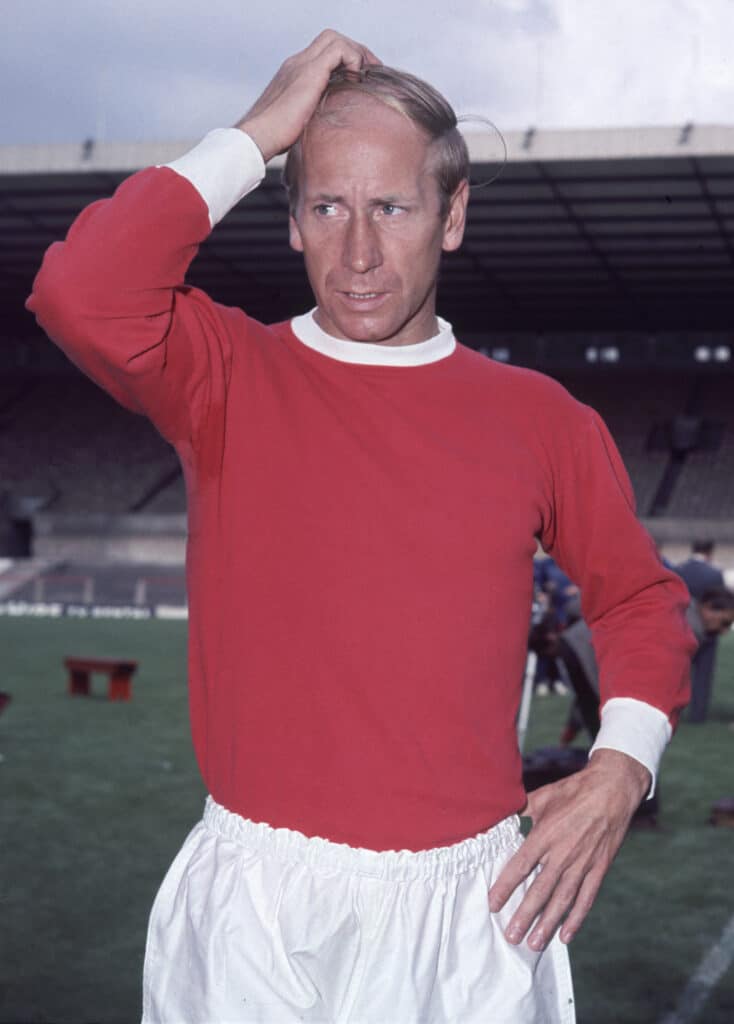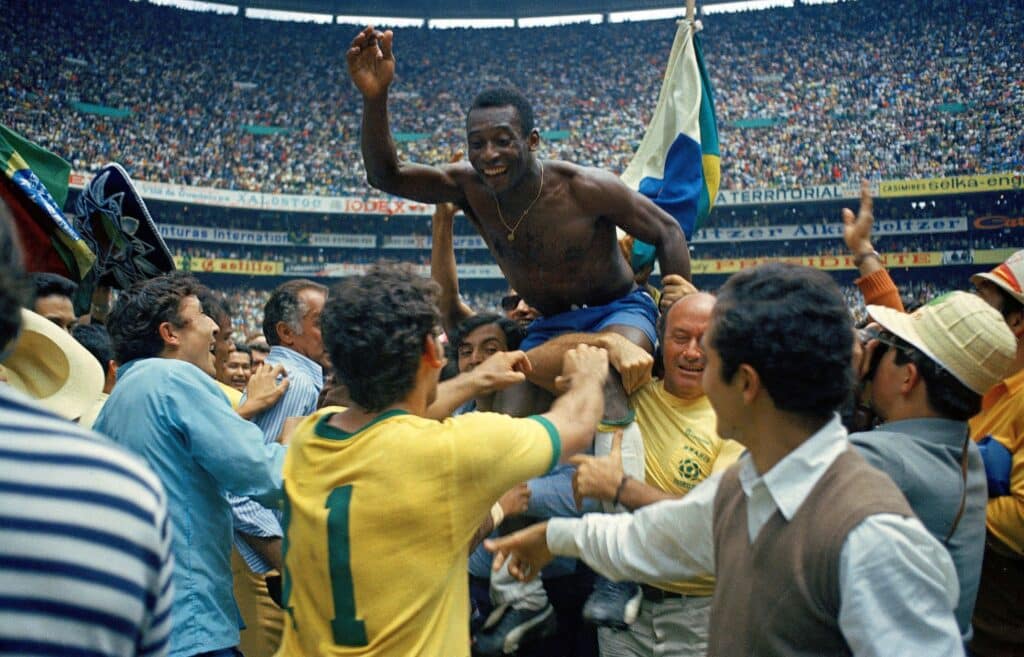
The evolution of football kits represents a captivating journey through time, reflecting the fusion of sport, fashion, and culture. From humble beginnings in the late 19th century to the technologically advanced designs of the modern era, football kits have undergone a remarkable transformation.
1800s – 1900s
The first uniform football kits began to appear in the 1870s. In England, colours were often those of the public schools with which the team was associated. Blackburn Rovers wore, and still wear, white jerseys adorned with the blue Maltese Cross of Shrewsbury School, where several of their founders were educated. Reading first played in the pink, blue and claret colours of the rowing club that bred them.
Football kits in the late 1800s were rudimentary, often comprising simple, long-sleeved shirts in solid colours with shorts and sturdy leather boots. Teams distinguished themselves through various coloured shirts and basic designs. As the sport gained popularity, colours became associated with clubs, laying the foundation for team identities.
#TheEnglishGame
— The Beautiful History / The Beautiful Badge (@BeautifulBadge) February 29, 2020
New @NetflixUK drama by Downton Abbey creator Julian Fellowes.
The period will explore the origins of football, tracking it back to Northern England in the mid-1800shttps://t.co/098ANnzeRB pic.twitter.com/l5g7TRbacr
The shirt above is indicative of an 1800s kit, simple, plain and not lightweight in the slightest. It is taken from the Netflix drama ‘The English Game’.
1920s-1940s:
As the game began to spread to Europe and beyond, clubs adopted kits similar to those worn in the United Kingdom, the birthplace of modern football. Often clubs chose colours directly inspired by British clubs. In 1903, Juventus embraced a black-and-white strip inspired by Notts County. Two years later, Argentina’s Club Atlético Independiente employed red shirts after watching Nottingham Forest.
During this period, kits started to evolve with the introduction of more intricate designs. Stripes and patterns began to adorn jerseys, and shorts became shorter as the Football Association dropped the rule that players’ ‘knickerbockers’ must cover the knees. The materials used improved, transitioning from cotton to synthetic fibres like nylon, providing players with more flexibility and comfort.
1950s-1960s:
The 1950s witnessed significant changes in football kit designs. Shirts became more tailored, often featuring collars, and were adorned with club badges and sponsors. It was also around this time that shirt numbers became commonplace. Whilst they were employed for certain games, such as the 1933 FA Cup Final, it was during this period that teams employed numbered shirts.
The 1960s saw the introduction of bold patterns and brighter colours, reflecting the vibrant cultural changes of the era.

1970s-1980s:
The ’70s and ’80s marked a period of flamboyant designs and bold experimentation. Collars disappeared, and V-neck or round-neck styles became popular. Polyester emerged as the primary fabric, enhancing breathability and durability. Iconic designs like the ‘Admiral’ kits gained prominence, displaying striking patterns and contrasting colours.
This period also brought about the tradition of shirt swapping. In the 1970 World Cup, Bobby Moore and Pele swapped shirts. After this, the tradition spread and became commonplace.

Alan Hudson in a classic 70s football kit !! pic.twitter.com/T2K4GnENZx
— Mark Davidson (@Dav15179099Mark) June 7, 2022
1990s-Present:
The 1990s witnessed a fusion of tradition and innovation in football kit design. Technological advancements led to lightweight, moisture-wicking fabrics that improved performance. Sponsors’ logos became more prominent, and manufacturers began incorporating advanced printing techniques for intricate designs.
The 21st century brought about a convergence of fashion and functionality. Kit designs became sleeker, incorporating ergonomic panels and seamless constructions for enhanced comfort and performance. Retro-inspired kits became a trend, honouring historical designs while embracing modern technology.
Ajax have dropped their new third kit inspired by Bob Marley. ?
— Football Tweet ⚽ (@Football__Tweet) August 20, 2021
It’s a thing of beauty. ? pic.twitter.com/qavYdQvOuI
Moreover, sustainability and eco-friendly materials gained traction, prompting clubs and manufacturers to focus on environmentally conscious production methods, using recycled materials in kit manufacturing.
Every single one of Liverpool’s Nike kits in 2020/21 was made from up to 18 recycled plastic bottles. As part of Nike’s Move to Zero initiative, their strips were produced from 100 per cent recycled polyester.
The evolution of football kits reflects not only the changes in sports apparel technology but also mirrors societal shifts and cultural trends. From basic shirts to technologically advanced, stylish ensembles, football kits have evolved into an integral aspect of the sport, showcasing a blend of tradition, innovation, and fashion sensibilities.
By Nicky Helfgott / @NickyH3lfgott on Twitter (X)



